Emergency Rescue efforts launched to save Madagascar’s most imperiled National Park

Tsaratanana National Park was established in 1927 to protect a remote rainforest wilderness in the northern highlands of Madagascar. Recognized as a Key Biodiversity Area and an Alliance for Zero Extinction site, the park is home to 9 species of lemur, including the Endangered Black Lemur Eulemur macaco. The park is under management of Madagascar National Park (MNP). The park is experiencing severe deforestation, largely due to its isolation and the difficulty of access, which has limited protection efforts for nearly a century. Even today, reaching the park requires a two-day walk. While its remoteness once offered natural protection, it has now become its greatest vulnerability. The area has become a major hub for illicit cannabis cultivation and unregulated gold mining, leading to increased instability and danger. These activities have created serious security concerns, preventing park staff from safely entering and monitoring the area. Tragically, the park has already lost 31% of its forest cover, with an average annual deforestation rate of 1.7%—equivalent to about 3,000 acres of rainforest destroyed each year. According to the Madagascar Protected Area Outlook 2024, the park is now classified as Critically Endangered (CR). In response to the critical situation, Conservation Allies has begun supporting Madagascar National Parks (MNP) in launching a major campaign of mixed brigade patrols within Tsaratanana. These efforts are being carried out in collaboration with military and police forces to ensure the safety of MNP rangers and reinforce law enforcement in the area. Significant progress has already been made, including the confiscation of large quantities of cannabis—most notably a single seizure of 350 kg—and the arrest and imprisonment of several individuals. These actions mark a crucial step toward restoring law and order in the park. While this marks the beginning of a meaningful response to a long-standing crisis, much work remains to be done. Our goal is to secure the park in time for its 100th anniversary in 2027 and to safeguard its future for generations to come.
Conservation Allies invests in family health care to ensure a safe future for communities and parks in Madagascar

French version A collaboration between Association FOSA, Conservation Allies, and Madagascar National Parks The magnificent dry forests and vital watersheds of Madagascar’s Ankarafantsika National Park are under increasing pressure. Rapid population growth, significantly outpacing the national average, is a key driver of forest degradation around the Park, and an average 2.0% annual deforestation rate inside Ankarafantsika National Park. Over 135,000 residents, including at least 32,000 women of reproductive age, live in the 12 communes bordering the park. These communities face severe challenges, with the nearest health centers often located 10-30 kilometers away. This lack of access, combined with limited education, contributes to early unplanned pregnancies and negative socio-economic impacts. These issues not only undermine community well-being but also directly jeopardize the conservation of this critical protected area. Project Overview In response to this urgent need, Association FOSA, in partnership with Conservation Allies and Madagascar National Parks (MNP), launched the Family Planning Outreach Project on October 15, 2024. The first pilot year of the initiative is funded by Conservation Allies (over $100,000 USD) and is strategically designed to deliver accessible reproductive health services, specifically family planning education and contraceptive services, to communities around the park. By empowering women to make informed reproductive choices, the project aims to reduce demographic pressure, improve maternal health, build household resilience, and ultimately strengthen conservation efforts in the Ankarafantsika landscape. Key Strategy: Community Health Brigades The project utilizes mobile healthcare providers, known as Community Health Brigades (CHBs), as a cornerstone of its strategy. Initially planned for four providers, this was quickly scaled to six highly motivated nurses based on initial field assessments – four experienced former Marie Stopes providers and two newly graduated local paramedics ensuring sustainability. These six CHBs are strategically deployed in pairs to cover the southern (Ambatoboeny) and northern (Marovoay) sectors, maximizing reach and operational efficiency in difficult-to-access areas. 6 Dedicated healthcare providers working in mobile Community Health Brigades 95 Distinct sites reached during initial project phase Project Progress and Milestones Significant milestones have already been achieved, demonstrating rapid progress and strong operational foundations. Crucially, a four-party Memorandum of Understanding (MoU) was signed in March 2025 between FOSA, the Ministry of Public Health, and the Boeny Regional Health Director. This landmark agreement formally integrates the project within national health systems, guaranteeing government supervision, coordination, support, training, and commodity flow. Following the MoU, the six CHBs underwent intensive training from March 30 – April 5,2025, covering essential skills like counseling, infection prevention, and long-acting reversible contraceptive techniques, including practical sessions in clinics. With trained providers and a functioning supply chain, service delivery commenced immediately. Early Results Early results (March – April 2025) showcase the project’s effectiveness. In just two months, CHB teams logged 184 work-days and delivered services in 95 distinct sites across multiple communes. Most importantly, 617 women received an IUD or implant during this initial phase. Long-acting reversible contraceptive uptake nearly doubled from 212 insertions in March to 405 in April, with implants accounting for a significant 77% of all insertions (475 vs 142 IUDs). Key Achievements (March-April 2025): 184 work-days by Community Health Brigades Services delivered at 95 distinct sites 617 women received long-acting reversible contraceptives 77% uptake in implant insertions Doubled service delivery from March to April Strategic Approach and Community Outreach The project strategically prioritizes communities closest to the park and those with the least access to healthcare. Strong collaboration with local authorities, community leaders, and existing partners like Planet Madagascar and Durrell Wildlife is leveraged for identifying vulnerable populations, planning routes, and integrating services. The project’s approach involves not just clinical services but also comprehensive education and community engagement. Health education sessions are conducted in various settings, from community gatherings under trees to small group discussions in homes. This integrated approach ensures that communities understand both the health benefits and the environmental connections of family planning. Looking Ahead: Future Plans and Target Impact Looking ahead, the CHBs will continue delivering services 20 days per month, expanding reach into more remote hamlets and remaining villages. Regular MoH supervision will ensure service quality. The project aims to serve 6,000 women with long-acting reversible contraceptive methods over 10 months, representing approximately 18.75% of the estimated women of reproductive age in the region. Integrated education campaigns will reach an additional 20,000 residents by year-end, promoting health, nutrition, and natural resource stewardship. Investment Opportunity This project offers a high-impact investment opportunity. The momentum built through official government partnership, a skilled workforce, robust logistics, and demonstrated early success with long-acting reversible contraceptive uptake positions the project for sustained impact. Investing in this initiative directly contributes to empowering women, improving community health, and protecting a globally significant biodiversity hotspot – a powerful model for integrated conservation and development. Project Budget Overview The Family Planning Outreach Project strategically focuses on the following categories: Personnel and service provision fees (35%): Prestation fees for CHBs members and project coordination Transportation & Logistics (15%): Vehicle maintenance, fuel, and field operations Medical Supplies (35%): Contraceptive commodities and clinical supplies Training & Capacity Building (10%): Continuous education and skill development Administrative Costs and M&E (5%): Office operations, communications, reporting and data quality Conclusion: A Model for Integrated Development The Family Planning Outreach Project represents a holistic approach to addressing interconnected challenges of health access, population growth, and environmental conservation. By enhancing reproductive health services and empowering women through family planning, the project directly contributes to relieving pressure on the fragile ecosystems of Ankarafantsika National Park. Early success indicators demonstrate both the feasibility and effectiveness of this approach. The significant uptake of services, strong government partnership, and community acceptance all point to a sustainable model that can be expanded and replicated in other conservation-critical areas. Your investment in this initiative will help scale this proven model to reach more communities, train additional healthcare providers, and ultimately protect one of Madagascar’s most important biodiversity treasures while improving human wellbeing. By Association FOSA, Conservation Allies, and Madagascar National Parks. For more information, please contact: info@conservationallies.org Une collaboration entre l’Association FOSA, Conservation Allies et Madagascar National Parks Les magnifiques forêts sèches et les
Rangers Are Saving Madagascar’s Singing Lemur from Extinction
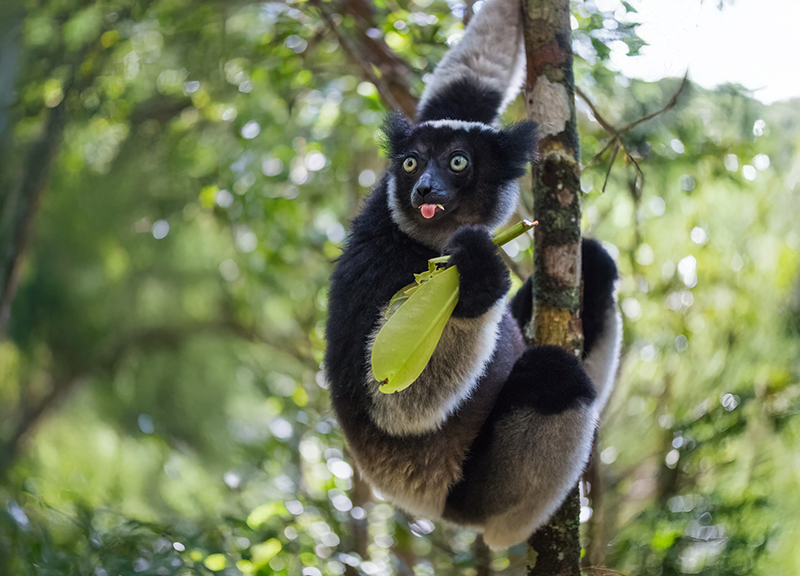
A Species on the Brink The Indri, often called the “singing lemur” for its haunting territorial calls, is Critically Endangered and found only in the eastern rainforests of Madagascar. With habitat loss accelerating across the island nation, protecting the remaining forest corridors is essential for this species’ survival. The Anjozorobe Angavo Protected Area represents one of the last strongholds for this remarkable primate. Since 1997, Association Fanamby—a Malagasy NGO and Conservation Allies partner committed to conserving Madagascar’s biodiversity—has been working tirelessly to protect its critical habitat. Community Rangers: The Frontline of Conservation With support from Conservation Allies, Fanamby has implemented an innovative community-based protection program specifically targeting poaching threats to the Indri. The cornerstone of this approach is the deployment of 138 local rangers (known as KMT – Komity Miaro ny Tontolo iainana) who conduct daily patrols within their home territories. These community rangers—four assigned to each of the 19 local villages—bring invaluable local knowledge to conservation efforts. Beyond patrolling, they serve as conservation ambassadors, raising awareness about the ecological importance of the Indri and reporting suspicious activities to mixed patrol teams. During the second half of 2024 alone, the KMT rangers patrolled a cumulative distance of 1,400 miles inside the park, demonstrating the scale and commitment of this conservation effort. A Remarkable Achievement The results have been extraordinary. According to Fanamby’s latest report, no poaching incidents involving the Indri have been recorded since 2023—a remarkable achievement for this IUCN Threatened species. “Thanks to the involvement of community patrols, local populations have become aware of the importance of this species for the ecosystem and have reported poaching activities,” noted Tsiory Rasoloarijao of Fanamby. “This represents a significant shift in community attitudes and practices.” Looking Forward While this success story represents a significant milestone, challenges remain. Illegal logging and slash-and-burn agriculture threaten the Indri’s forest home. According to the Madagascar Protected Area Outlook 2024, Anjozorobe Angavo Protected Area is Critically Endangered, having lost over 2% of its forest every year for the past 20 years. This horrific forest loss is now the major focus of efforts by Fanamby, together with Conservation Allies support. Through our continued partnership, we are helping to ensure that the call of the Indri will continue to echo through Madagascar’s forests for generations to come.
Drone Training Strengthens Indigenous-Led Rainforest Conservation

In the Amazon rainforests of Ecuador, a collaborative drone training workshop is empowering the Maikiuants, a Shuar Indigenous community, to better protect their ancestral territory. Supported by Conservation Allies, the University of Azuay GIS team in partnership with Ecoforensics provided ten indigenous paraecologists with hands-on training in drone operation and mapping. Held in southern Ecuador’s Morona Santiago province—where pressures from expanding gold mining concessions pose a growing threat to both people and biodiversity—the workshop focused on the legal and technical aspects of drone use. Participants received instruction on drone regulations, flight safety, and image collection before applying their skills in the field to capture photos and videos of their territory. Drone technology offers an invaluable tool for indigenous communities like the Maikiuants to monitor land use, detect illegal encroachments, and document ecological changes. By creating detailed territorial maps, they can bolster land claims, plan patrol routes more effectively, and provide visual evidence to defend their forests in court. Undergraduate biology students from the University of Azuay, together with Lourdes Nunez, the Latin America Conservation Officer at Conservation Allies, also assisted with drone training and mapping work while gaining a deeper understanding of how indigenous knowledge and modern tools can align to protect the Amazon rainforests. This initiative is part of a broader strategy to strengthen indigenous-led conservation by merging traditional stewardship with scientific and legal resources. It supports Ecuador’s progressive legal framework, which recognizes the rights of nature—an approach that allows ecosystems themselves to be represented in legal proceedings. By equipping communities with the tools to assert these rights, this partnership reinforces both the autonomy of Indigenous land defenders and the protection of critical Amazonian rainforest lands.
Local Authorities and Communities Unite to Protect Critically Endangered Bora Reserve
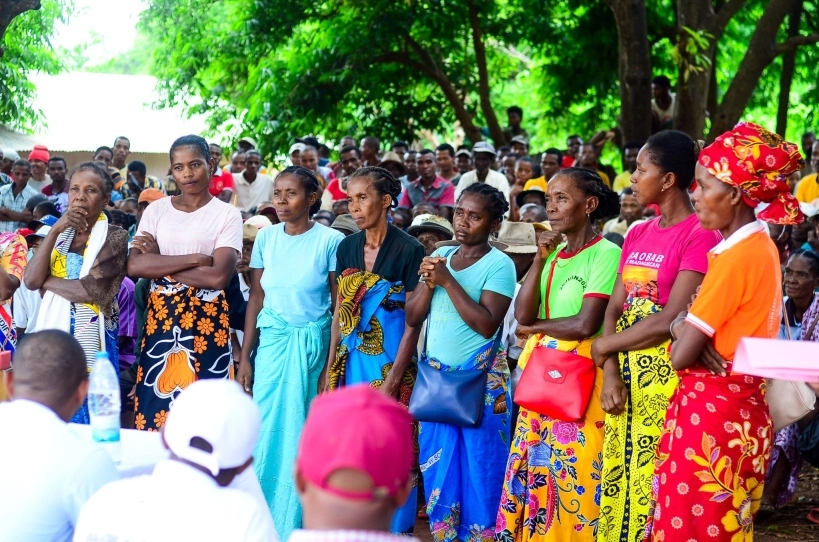
The Bora Special Reserve in Madagascar, classified as a Critically Endangered Protected Area, is facing severe threats due to deforestation and agricultural expansion. In response, Conservation Allies Madagascar Conservation Officer Audlin Ramiandra recently visited the reserve to assess its condition and discuss conservation strategies with local and regional authorities, together with the community. This visit has sparked a significant effort to safeguard this vital ecosystem. Following Audlin’s visit, the Governor and the Regional Director of Environment and Sustainable Development (DREDD) of the Sofia Region conducted a special mission to Anjalazala Commune, a key area involved in protecting Bora Special Reserve. The mission aimed to raise awareness among local communities about the importance of conservation, highlight the financial support provided by Conservation Allies, and encourage collaborative efforts to protect biodiversity while promoting sustainable development. The local population expressed a strong willingness to collaborate and even committed to preserving the reserve. In the past, authorities have struggled to enforce conservation measures owing to financial constraints, which has led to extensive deforestation as both local communities and migrants from other regions of Madagascar have converted large portions of the forest into corn fields. As part of our commitment to conservation, Conservation Allies has pledged funding to support the reserve’s protection efforts. This announcement has been met with great enthusiasm from regional authorities, who recognize the critical role of Bora Special Reserve in maintaining the region’s ecological balance. Surrounding communities are also being engaged to protect the Bora Reserve and will be rewarded with community livelihood improvement investments should they stop future deforestation as shown in Global Forest Watch. To reinforce the conservation message, the Governor and the Regional Forest Director visited villages surrounding the reserve, directly addressing the community. They emphasized the legal protections in place and warned against further deforestation and agricultural expansion. Authorities made it clear that violations—such as unauthorized farming, illegal burning, and deforestation—would be met with strict enforcement measures. This mission marks a crucial step forward in ensuring the survival of the Bora Special Reserve. With the continued support of Conservation Allies and the cooperation of local communities and authorities, there is renewed hope for preserving one of Madagascar’s most threatened ecosystems.
Fighting Wildlife Trafficking in Peru
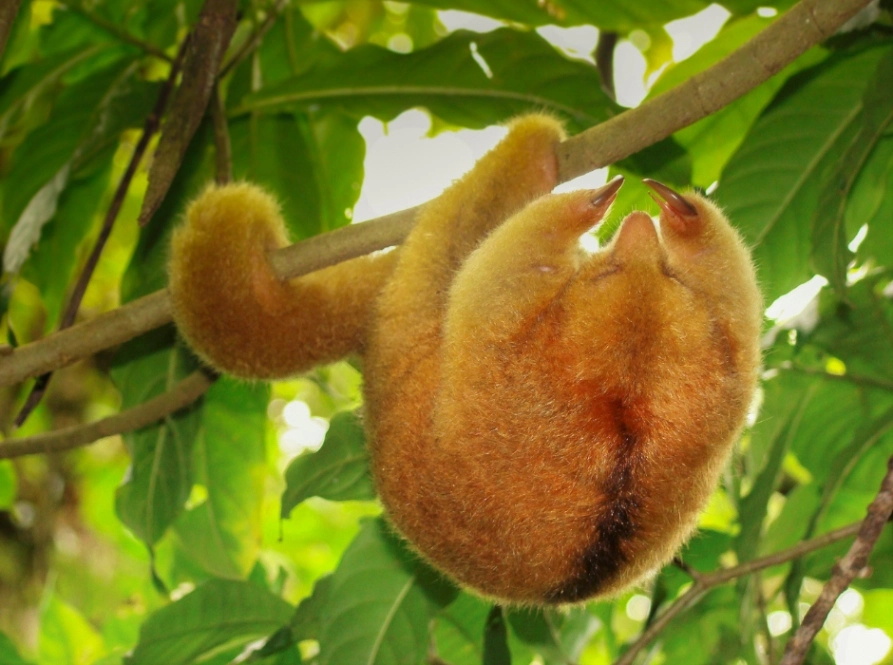
Wildlife trafficking remains a significant threat to biodiversity in Peru, where a vast array of unique species are targeted for the illegal pet trade and other exploitative markets. The country’s rich ecosystems, from the Amazon rainforest to the Andean cloud forests, provide habitat for countless rare and endangered species, many of which are captured and sold illegally. Conservation Allies partner Neotropical Primate Conservation (NPC) play a crucial role in combatting this crisis by supporting rescue efforts and monitoring illegal wildlife activity. In December, NPC worked in collaboration with Peruvian environmental authorities to rescue a Pygmy Anteater near the village of Pacayzapa in the San Martín region. After a health check, the anteater was able to be released safely back into the wild. In addition to rescuing the pygmy anteater, NPC assisted in the recovery of a toucanet and an owl, both discovered disoriented and injured—likely victims of human encroachment and illegal wildlife trade—in the city of Moyobamba. These cases highlight the broader issue of wildlife trafficking, where animals are often taken from their natural habitats and suffer as a result. After receiving the necessary care and support, they were stabilized and prepared for release, reinforcing the importance of vigilance and rapid intervention in combating this ongoing crisis. NPC is actively monitoring cases of wildlife trafficking and illegal pet ownership, ready to support authorities in enforcing conservation laws. These efforts are part of a broader strategy to protect Peru’s wildlife by combining anti-trafficking action with nature conservation, environmental education, and community engagement. Every intervention serves as a reminder of the ongoing battle against wildlife trafficking—and the vital role conservationists play in safeguarding the Peru’s irreplaceable biodiversity. Donate to support NPC’s vital work
Dramatic Decline in Forest Fires Saves Madagascar’s Oldest National Park, Among Other Conservation Victories in 2024
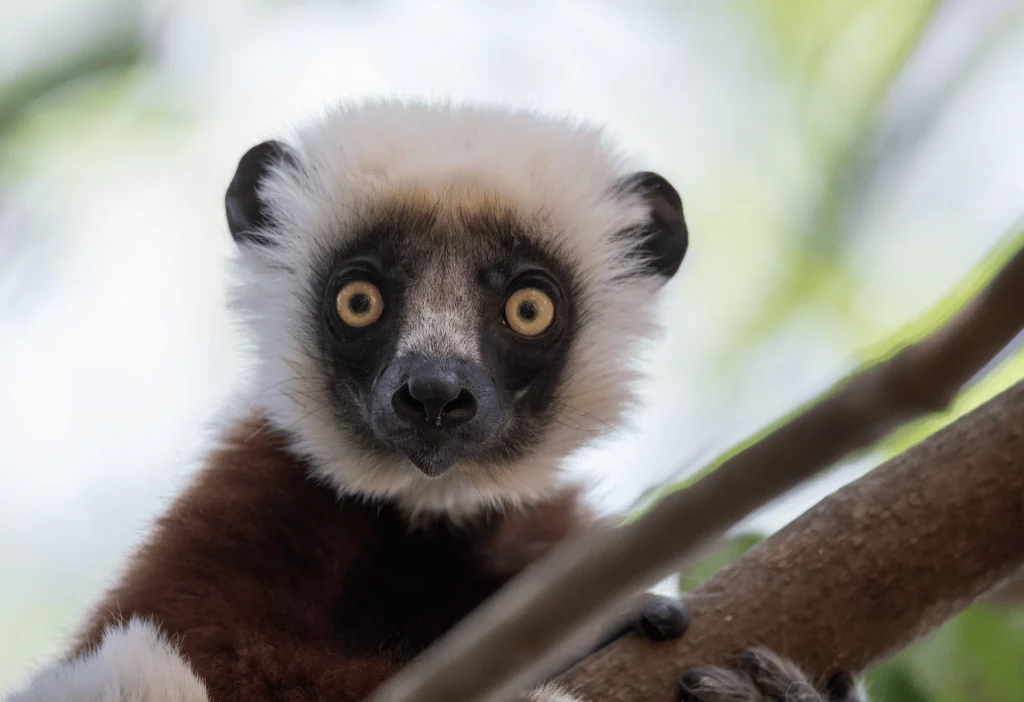
A major conservation breakthrough has been achieved in Madagascar’s oldest national park, where forest fires have decreased an astounding 35-fold in just one year. Ankarafantsika National Park, established 97 years ago, is the last stronghold of the Critically Endangered Coquerel’s Sifaka and serves as a crucial water tower feeding rivers into Madagascar’s second most important rice-producing region. For the past decade, the park’s tropical forests have faced severe threats from cattle-rustling gangs who set fires to create pastures and hide their tracks. With deforestation accelerating to 3.8% per year and just under 50% of forests remaining, the 337,000-acre park was on track to be destroyed within the next decade and was declared Critically Endangered by the Madagascar Protected Area Outlook. In February 2024, Conservation Allies partnered with Hempel Foundation, FAPBM, KfW, and others to explore urgent solutions to save the 337,000 acre park (the same size as Grand Bahama Island). The major outcome of the two-day meeting was a collective commitment to zero deforestation, significantly stepping up funding for mixed brigade park protection and law enforcement patrols to stop illegal activities by the 100th anniversary of the park in 2027. The impact has been dramatic—forest fires decreased from 1,284 in 2023 to just 36 fires during the same period in 2024. Acting on this commitment, Conservation Allies tripled support to our Partners (Fosa Association and Madagascar National Parks) specifically to increase Ranger patrols during the peak dry season. We also supported a new “Control Center” for the park to track and coordinate patrols responding to daily satellite reports on fires and forest losses. Furthermore, we offered compensation in the form of essential food supplies to communities around the park if they lit no fires. This remarkable success in Madagascar headlines a year of significant conservation achievements worldwide. In Colombia, two major new protected areas were established: the Loros Andinos Regional Natural Park, which protects the recovering Yellow-eared Parrot population, and Las Tangaras Regional Natural Park, safeguarding over 5,700 acres of pristine subtropical rainforest. In Ecuador, the Cambugán Protected Forest expanded by 445 acres, securing vital habitat for endangered species like the Andean bear. With such positive results and dedicated partnership efforts, there is renewed hope that Ankarafantsika National Park can not only survive but thrive, serving as an inspiring example of successful conservation through collaborative, community-driven environmental protection.
Conservation Allies Hosts Latin American Partners to Advance Biodiversity Protection
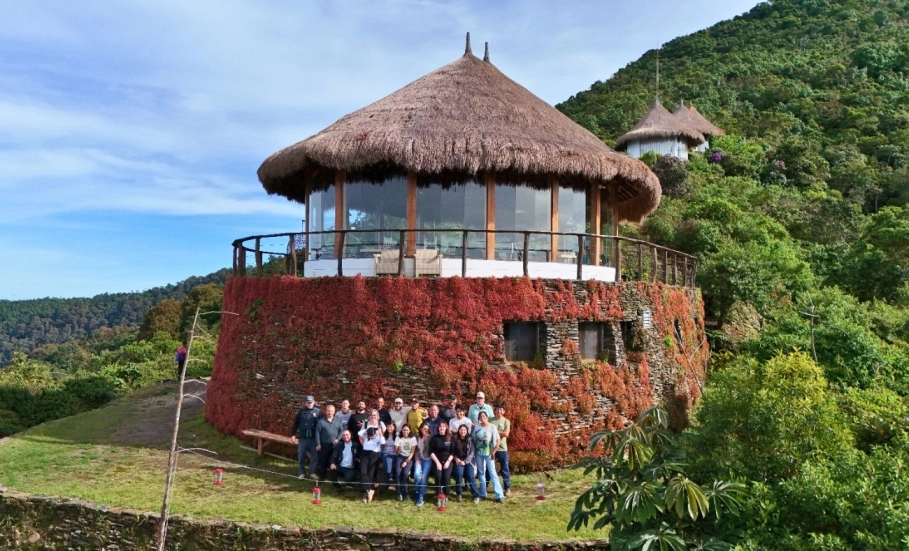
In October, Conservation Allies hosted a 5-day workshop at the El Dorado ProAves Reserve in Colombia’s Sierra Nevada de Santa Marta, bringing together nine partner organizations from across Latin America. Participants from Panama, Ecuador, Guatemala, Peru, and Colombia collaborated to exchange knowledge, share innovative solutions, and strengthen regional conservation efforts. The workshop delved into the recent and ongoing work led by our Latin American partners, highlighting innovative projects, challenges, and solutions. Notable initiatives included training rural and Indigenous community members as parabiólogos—research assistants contributing to scientific research—and exploring sustainable alternatives to reduce the impacts of cattle grazing. These discussions promoted collaboration and enhanced the shared understanding of strategies to protect the region’s unique species and habitats, advancing conservation efforts by fostering stronger partnerships and laying the groundwork for more coordinated approaches to safeguarding biodiversity. By uniting these passionate conservation leaders, the event underscored the collective commitment to safeguarding Latin America’s extraordinary wildlife and natural areas. Participating Organizations: Defensores de la Naturaleza (Guatemala), Adopta (Panama), Fundación ProAves, Sociedad Ornitológica de Córdova (Colombia), Corporación SalvaMontes (Colombia), Fundación Cambugán (Ecuador), Tesoro Escondido (Ecuador), Kawysay Biological Station (Peru), and Neotropical Primate Conservation (Peru).
Official Visit Highlights Efforts to Preserve Ankarafantsika National Park
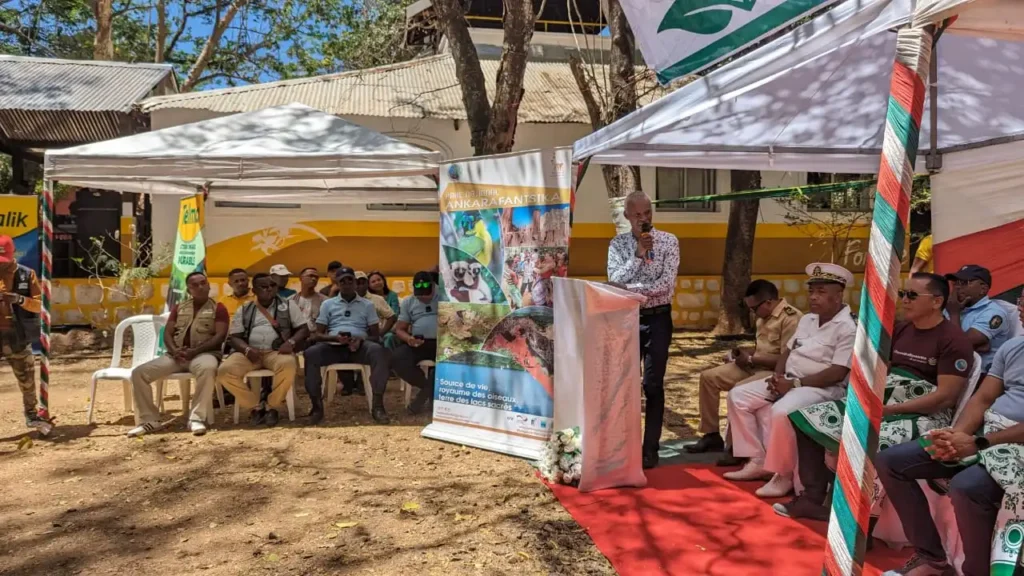
During his visit, the Minister highlighted the significant threat posed by fires in the park and emphasized the importance of protecting the remaining forests. These efforts are crucial not only for the park’s rich biodiversity but also for the surrounding districts and rural communities. As part of his plan, the Minister announced an intensive reforestation initiative set to begin during the upcoming rainy season. A key moment of the visit was the presentation of the new command center, a donation from Conservation Allies to MNP Ankarafantsika. Mr. Charles, Director of Ankarafantsika Park, introduced the command center’s advanced fire and deforestation detection tools, designed to improve response times and reduce environmental pressures. Accompanied by Mr. Solo, President of the Fosa Association, Mr. Charles demonstrated how these new tools will enhance conservation efforts in the region. Conservation Allies remains committed to supporting Ankarafantsika National Park and its partners, ensuring that efforts to combat deforestation, fires, and other environmental threats continue to protect Madagascar’s vital ecosystems.
Uniting for Madagascar: Conservation Allies Hosts Pivotal Protected Areas in Peril Forum to accelerate conservation
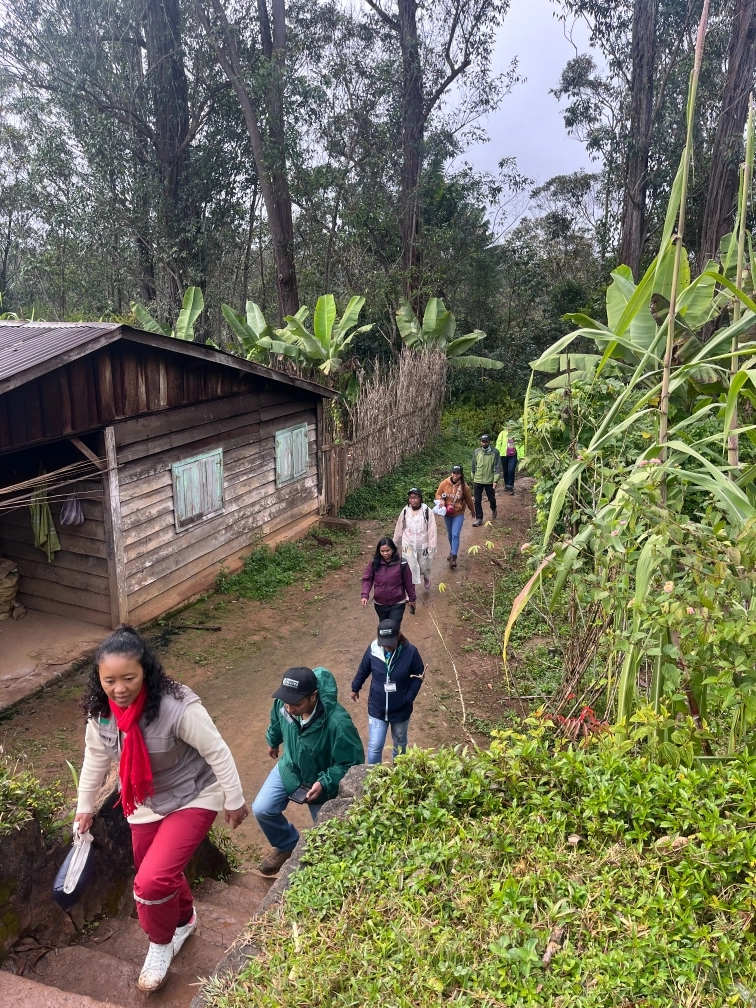
The forum was not only a platform for strategic planning but also a rare and invaluable opportunity for many of our partners to meet face-to-face for the first time. In the spirit of collaboration and camaraderie, participants shared expertise, learned about conservation challenges faced in different regions of Madagascar, and forged new strategic partnerships. Despite the serious subject matter, the forum was filled with a sense of hope and renewed energy, as we all worked together toward our shared goal of safeguarding Madagascar’s unique wildlife. During the event, we conducted SMART (Spatial Monitoring and Reporting Tool) and drone training sessions to enhance Madagascar’s conservation technology capabilities. Conservation networking and communications workshops were also held, strengthening collaborative efforts and outreach capabilities. Additionally, we took a day trip to Mitsinjo’s Protected Area, where we were lucky enough to see and hear the Indri, Madagascar’s largest lemur, in its natural habitat—a reminder of what we are fighting to protect. A significant outcome of the forum was the unanimous decision to increase mixed brigade patrols, which integrate law enforcement with conservation efforts to stop the illegal activities contributing to Madagascar’s rapid deforestation. This approach has been shown to be highly effective and is crucial for protecting Madagascar’s unique species and ecosystems from further threat. By strongly prioritizing these joint patrols, we can increase the protection of Madagascar’s endangered wildlife and ensure the preservation of its rich biodiversity. This forum represents a crucial advancement in our mission to safeguard Madagascar’s endangered wildlife. Through collaborative efforts and shared expertise, we are working towards realizing our collective vision of a sustainable future for the beautiful, one-of-a-kind island of Madagascar Over 40 people attended the 5-day workshop in Adasibe. Organizations in attendance included: Alliance Voahary Gasy (legal organization), Antrema Miray, ASITY Madagascar, Association Analasoa, Association Fosa, Association Fanamby, Association TAMIA, Association Mitsinjo, CURSA, Direction de l’Environnment ed du Developpement Durable (DREDD) Toliara, Durrell, Fondation pour les Aires Protegees et de la Biodiversite de Madagascar (FAPBM), Fikambanana Bongolava Maitso (FBM), GERP, IMPACT Madagascar, Lemur Conservation Foundation, Madagascar Biodiversity Project, Madagascar Wildlife Conservation, Madagasikara Voakajy, Ministere de l’Environnement ed du Developpement Durable (MEDD), Missouri Botanical Garden, Madagascar National Parks, Ny Tanintsika, Planet Madagascar, Razan’ny Vohibola, SADABE, and VOI Tahindraha.


